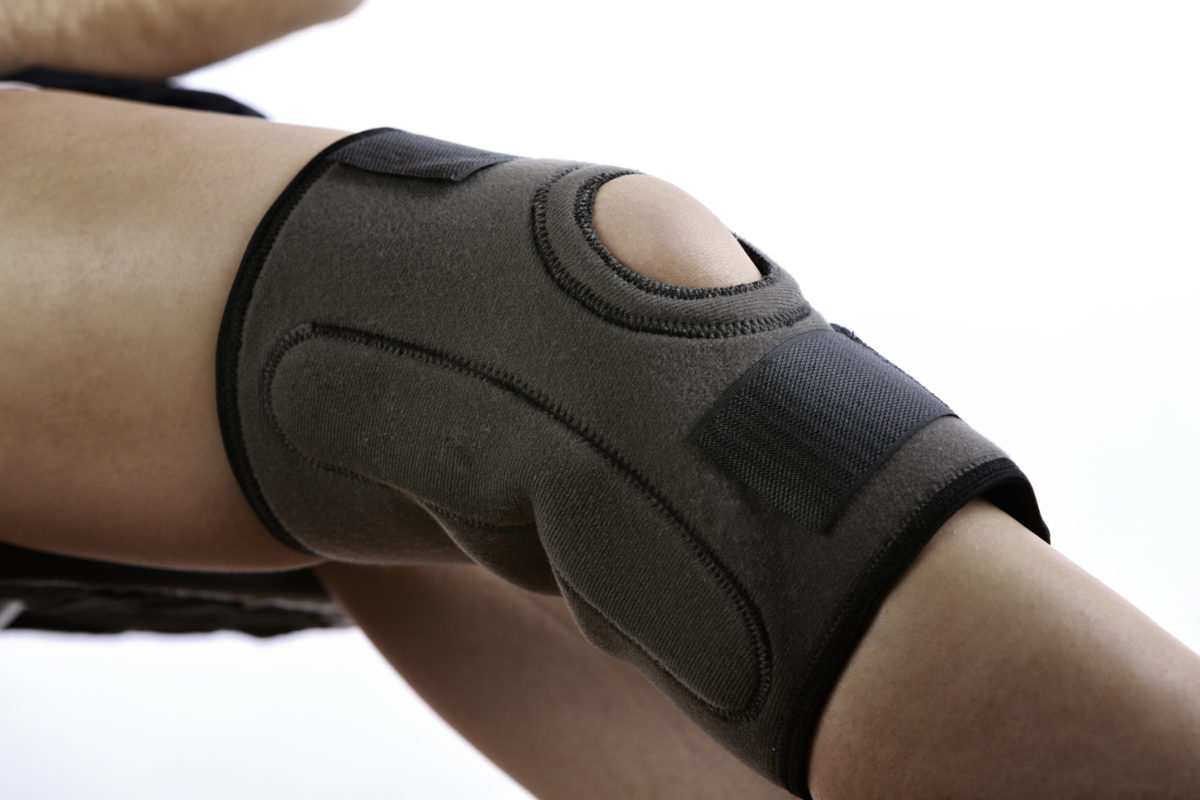
Anatomy & Physiology of the Knee
The knee is the largest of the 187 joints in the body. As such, the knee is subject to a variety of diseases and injuries and is frequently injured because it is commonly abused.21 The knee is a hinged joint with some rotation to provide locking. Structures in the knee provide cushioning and shock absorption and these structures are frequently injured. Four major ligaments stabilize the knee:
- Anterior Cruciate Ligament (ACL)—prevents the knee from unduly slipping forward
- Posterior Cruciate Ligament (PCL)—prevents the knee from unduly slipping backward
- Lateral Collateral Ligament (LCL)—binds the femur (upper leg bone) to the tibia (lower leg bone) laterally (on the outside)
- Medial Collateral Ligament (MCL)—binds the femur to the tibia medially (on the inside)
Causes and Types of Common Knee Injuries
Knee ligaments are prone to stretching and tearing with injury. Ligament laxity will often result in serious injury.
- ACL Injuries — ACL tears occur in women more than men. An ACL injury can result either from contact to the knee or from some unexplained noncontact mechanism during sports activities. This suggests that there may be extrinsic factors that lead to ACL tears. Female soccer players and female skiers are at the highest risk for an ACL tear.25 ACL injuries may not always cause pain, although they typically do. Most likely, a loud popping sound can be heard at the time of injury.
- Patella tendonitis AKA “Jumpers Knee” — Tendonitis is the inflammation of a tendon, and this often occurs in the knee due to excessive amounts of jumping and landing on hard surfaces. Symptoms of patella tendonitis include pain in the front of the knee. Symptoms will likely increase with climbing stairs or sitting for an extended period of time.
- Meniscal Tear — Recent studies support that the menisci have a crucial role in stability, load bearing, and lubrication of the knee joint.21 Menisci performance is related to the mechanical knee function. Therefore, impairment of related knee functions leads to pathology of the menisci. Injury to the menisci is considered to result from traction, compression, or torque forces or from a combination of all three. Injuries occur mainly from entrapment of the menisci between the femoral heads and the tibial plateau. This can happen one of two ways: 1.) a severe external force exceeds the normal alignment of the joint components, or 2.) there is entrapment between the femur and tibia from an unphysiological movement.25 Diagnostic signs and symptoms include the patient complaining of severe knee pain after an incident, which may include feelings of locking and buckling. The patient may also explain it as though something tore within the knee. The incident is most often a turning and twisting movement during an athletic activity or a direct blow to the knee. Pain from an acute meniscal tear usually results in immediate termination of activity.
- The “Terrible Triad” – tear in medial meniscus with rupture in both the MCL and ACL—This injury is not uncommon in violent sports, such as football. Extreme pain and knee instability will result from this injury and will require surgical repair.
Preventative Methods
Although some knee injuries occur suddenly and accidentally through sport involvement, there are several ways to reduce the risk of knee injuries:
- Wear appropriate footwear at all times and consider the surface on which you are moving on. Is it stable/sturdy?
- Talk to a specialist about appropriate bracing of the knee to help prevent injury.
- Strengthen surrounding muscle groups such as the lower back, quadriceps, and hamstrings to help take excess pressure off the knee joint. The large muscles of the thigh provide strength and stability to the knee. Both these muscle groups weaken rapidly after knee injury. Maintaining muscle tone is important in preventing injury as well as rehabilitation after injury or surgery.
- PT Northwest is a Certified Clinical Site in Oregon, which provides Sportsmetrics training to athletes. Sportsmetrics is a nationally recognized sports rehabilitation program proven to significantly reduce the risk of serious knee injury in female athletes by increasing vertical jump height, improving hamstrings to quadriceps muscle strength ratio, improve jumping and landing mechanics, and improving symmetry in right-to-left strength. Sportsmetrics is a 6-week training program, 3x/week, that incorporates a dynamic warm-up, jumping training, strength training, flexibility, and speed and agility.
*If you are experiencing discomfort or recognize a sudden decrease in strength and/or stability, consult your doctor immediately about your symptoms and your possible need for physical therapy at a PT Northwest physical therapy location.
